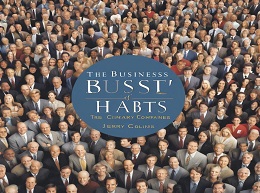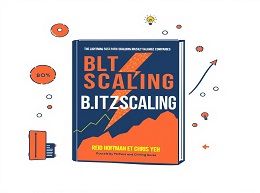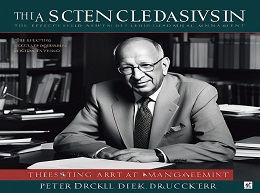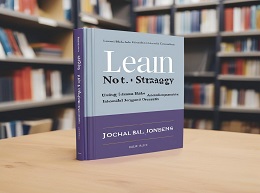The Little Black Book of Innovation: How It Works, How to Do It
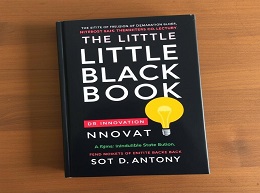
Unveiling "The Little Black Book of Innovation": A Comprehensive Review
In "The Little Black Book of Innovation: How It Works, How to Do It," Scott D. Anthony provides a clear and practical guide to understanding and implementing innovation in any organization. Drawing from his extensive experience as a leader at Innosight, a consulting firm focused on innovation, Anthony demystifies the process of innovation, making it accessible and actionable for individuals and companies alike. This review delves into the key concepts, practical advice, and real-world examples presented in the book, offering a detailed analysis for readers looking to foster innovation in their own endeavors.
The Need for Innovation
Anthony begins by emphasizing the critical importance of innovation in today’s rapidly changing business landscape. Companies that fail to innovate risk becoming obsolete, while those that embrace innovation can achieve sustainable growth and competitive advantage.
Example: Blockbuster vs. Netflix
The decline of Blockbuster and the rise of Netflix illustrate the necessity of innovation. While Blockbuster clung to its traditional video rental model, Netflix embraced digital streaming, ultimately revolutionizing the entertainment industry and securing its market dominance.
Defining Innovation
Innovation is often misunderstood and mischaracterized. Anthony provides a clear definition, describing it as the process of creating something new that generates value. This encompasses not only groundbreaking inventions but also incremental improvements and novel applications of existing technologies.
Practical Insight: Apple’s Product Evolution
Apple’s innovation strategy includes both radical innovations, like the iPhone, and incremental improvements, such as iterative updates to its existing product lines. This balanced approach has enabled Apple to consistently deliver value and maintain its leadership position in the tech industry.
Phase 1: Discovery
The innovation journey begins with the discovery phase, where the focus is on identifying opportunities and generating ideas. Anthony stresses the importance of curiosity, open-mindedness, and a willingness to explore new possibilities.
Example: IDEO’s Design Thinking
IDEO, a global design firm, employs design thinking to drive innovation. By fostering a culture of curiosity and encouraging brainstorming sessions, IDEO generates a steady stream of innovative ideas and solutions.
Phase 2: Incubation
Once promising ideas are identified, they enter the incubation phase. This involves developing prototypes, testing hypotheses, and refining concepts. Anthony highlights the importance of creating a safe environment for experimentation and learning from failure.
Practical Insight: Google X
Google X, the innovation lab of Alphabet Inc., is known for its "moonshot" projects. By creating an environment that encourages experimentation and tolerates failure, Google X has developed groundbreaking innovations such as self-driving cars and Project Loon.
Phase 3: Acceleration
During the acceleration phase, successful prototypes are scaled up and prepared for market entry. This requires robust project management, resource allocation, and strategic planning to ensure that innovations can be effectively implemented and commercialized.
Example: Tesla’s Model 3
Tesla’s development of the Model 3 showcases the acceleration phase. After refining the prototype, Tesla scaled up production, secured necessary resources, and strategically planned its market entry to achieve widespread adoption.
Phase 4: Scaling
The final phase is scaling, where the innovation is rolled out on a larger scale, and efforts are made to optimize and sustain its impact. This phase focuses on expanding market reach, enhancing operational efficiency, and driving continuous improvement.
Practical Insight: Airbnb’s Growth Strategy
Airbnb’s journey from a small startup to a global hospitality giant exemplifies successful scaling. By leveraging digital platforms, optimizing operations, and continuously improving its offerings, Airbnb has expanded its market presence and sustained growth.
The Innovation Pyramid
Anthony introduces the Innovation Pyramid, a framework that categorizes innovation initiatives into core, adjacent, and transformational efforts. This helps organizations balance their innovation portfolio and allocate resources effectively.
Example: Amazon’s Innovation Portfolio
Amazon’s innovation strategy includes core innovations (e.g., optimizing e-commerce operations), adjacent innovations (e.g., expanding into cloud computing with AWS), and transformational innovations (e.g., developing AI-driven services like Alexa). This diversified approach has enabled Amazon to maintain a competitive edge.
The Importance of Cross-Functional Teams
Effective innovation requires collaboration across different functions and disciplines. Anthony emphasizes the value of cross-functional teams in bringing diverse perspectives and skills to the innovation process.
Practical Insight: Procter & Gamble’s Connect + Develop Program
Procter & Gamble’s Connect + Develop program leverages cross-functional teams and external collaborations to drive innovation. By integrating diverse expertise and fostering collaboration, P&G has successfully developed numerous innovative products.
Leadership’s Role in Fostering Innovation
Leaders play a crucial role in cultivating an innovation-friendly culture. Anthony highlights the importance of visionary leadership, which encourages risk-taking, supports experimentation, and celebrates both successes and failures.
Example: Elon Musk’s Leadership at SpaceX
Elon Musk’s leadership at SpaceX demonstrates the impact of visionary leadership on innovation. By setting ambitious goals, encouraging bold ideas, and fostering a culture of experimentation, Musk has driven SpaceX to achieve significant breakthroughs in space technology.
Encouraging Experimentation and Learning
Creating an environment that supports experimentation and learning is essential for innovation. Anthony advocates for practices such as rapid prototyping, iterative testing, and continuous feedback to facilitate learning and improvement.
Practical Insight: 3M’s 15% Rule
3M’s 15% rule, which allows employees to spend 15% of their time on passion projects, encourages experimentation and innovation. This policy has led to the development of iconic products like Post-it Notes and Scotch Tape.
Addressing Organizational Resistance
Innovation often encounters resistance within organizations due to entrenched mindsets and fear of change. Anthony provides strategies for overcoming this resistance, such as promoting a growth mindset and aligning incentives with innovation goals.
Example: IBM’s Transformation
IBM’s transformation from a hardware-centric company to a leader in cloud computing and AI involved overcoming significant organizational resistance. By promoting a culture of continuous learning and aligning incentives with new strategic goals, IBM successfully navigated this transition.
Navigating Regulatory and Market Challenges
Innovators must also contend with regulatory and market challenges. Anthony advises adopting a proactive approach, engaging with regulators, and staying attuned to market trends to navigate these challenges effectively.
Practical Insight: Uber’s Regulatory Strategy
Uber’s rapid global expansion encountered numerous regulatory challenges. By proactively engaging with regulators and adapting its business model to comply with local laws, Uber has navigated these challenges and maintained its growth trajectory.
Embracing Innovation for Sustainable Success
"The Little Black Book of Innovation: How It Works, How to Do It" by Scott D. Anthony provides a comprehensive and practical guide to fostering innovation. By understanding the four phases of innovation, leveraging practical tools and techniques, and building an innovation-friendly culture, organizations can achieve sustainable success in today’s dynamic business environment. Whether you are an entrepreneur, business leader, or aspiring innovator, Anthony’s insights offer valuable guidance for navigating the complex and rewarding journey of innovation.
